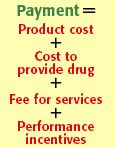Viewpoint: It's time to overhaul our drug reimbursement system
The author calls for a transparent system for reimbursing pharmacists for their drugs and services that takes into account their operating costs and allows for cost-of-dispensing adjustments.

In a recent editorial, Daniel A. Hussar, Ph.D., of the University of the Sciences in Philadelphia, stated that the third-party system through which pharmacies are paid for dispensing prescriptions is so badly broken, it needs fundamental reform. I agree. Hussar proposed several changes:

Essentially, I am calling for a completely transparent system within which the shell games that have historically been played by pharmacists and payers alike are eliminated. In such a future, pharmacies would be assured that third-party payment plans would not threaten their financial viability, but neither would they include above normal profits. By implementing a truly cost-based drug reimbursement model, pharmacies would be encouraged to compete on the basis of service and improved patient outcomes. After all, pay-for-performance approaches have been developed for physicians and hospitals. Similar incentives could be set up for pharmacists.
This model is consistent with that proposed in a 1994 APhA white paper, which recommended a new payment formula for outpatient prescription drugs consisting of four components:
Payment = Product cost + Cost to provide drug + Fee for services + Performance incentives
A new reimbursement environment in which profit for dispensing drugs is guaranteed, albeit limited, would encourage pharmacies to seek additional profit through pharmacy services, such as medication therapy management, immunizations, and disease management. The net effect would be improved quality of community pharmacy care and assured patient access to that care.
It is time to act boldly and decisively to reform our drug reimbursement system. The stakes are high, and time is short.
THE AUTHOR is a professor at Midwestern University-Glendale and managing partner at MENTORx/PharmAccount.